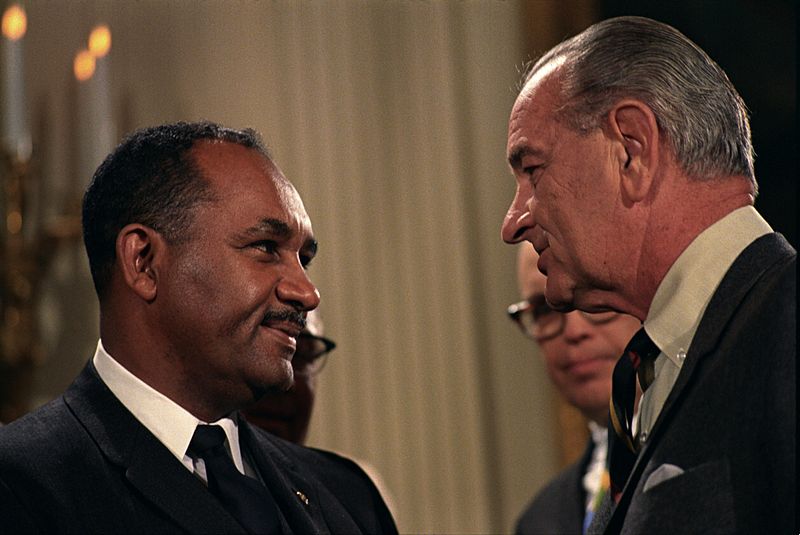AARP Hearing Center
Clarence Mitchell: Secret Weapon in the Fight for Civil Rights
By Steve Mencher, January 31, 2014 12:46 PM
Read about the landmark Civil Rights Act of 1964, which marks its golden jubilee this July, and you'll learn about the high-profile personalities in Congress and the White House who battled during this stretch of our country's faltering march toward fair treatment for all citizens. But you're less likely to hear about key players behind the scenes, even during Black History Month.

Meet Clarence Mitchell. Heading the NAACP office in Washington in the heart of the civil rights era, Mitchell haunted Capitol Hill enough to be known as the "101st senator."
He was "the single most diligent outside lobbyist" for the civil rights bill, says Todd Purdum, author of the upcoming book An Idea Whose Time Has Come: Two Presidents, Two Parties, and the Battle for the Civil Rights Act of 1964. Mitchell helped marshal a coalition - labor unions, religious groups and others - that kept pressure on Congress, especially during the 57-day Senate filibuster of the bill by Southern Democrats.
Slide show: Golden Jubilee of the Civil Rights Act of 1964
Born in Baltimore on March 8, 1911, Mitchell began his career as a reporter for the Baltimore Afro-American. "One of the first major stories he covered," recounts Purdum, a contributing editor at Vanity Fair and senior editor at Politico, "was a brutal lynching on the Eastern Shore of Maryland, and it affected him very strongly. He later decided he wanted a life of more stability than could be provided by journalism, so he went to work for the NAACP."
In nearly 30 years as a lobbyist with the group, Mitchell proved resilient. "He kept coming in the face of one challenge after another," Purdum says. "He seems like one of those people who bit by bit, day by day, was just pushing the rock up the hill. Never complaining, never tiring, never flagging."
Mitchell, who died 30 years ago, was known as firm, fair and principled. Even outbursts of temper, Purdum says, were carefully calibrated to achieve maximum effect. Though never seeking the spotlight, he was always present at key moments.
So, Purdum writes in his book, due out in April, when the record-breaking filibuster of the civil rights bill finally ground to a halt, the 101st senator was one of "precisely six black spectators" in the Senate gallery.
Credit: LBJ Library photo of Clarence Mitchell and Lyndon Johnson by Frank Wolfe
>> Sign up for the AARP Health Newsletter
Also of Interest
- Can You Be Blocked From Jury Duty if You're Gay?
- Photos: Nelson Mandela and Other Newsmakers Who Passed Away in 2013
- Get free assistance with tax-return preparation from Tax-Aide
- Join AARP: Savings, resources and news for your well-being
See the AARP home page for deals, savings tips, trivia and more
>> Get entertainment and dining discounts with your AARP Member Advantages.































































